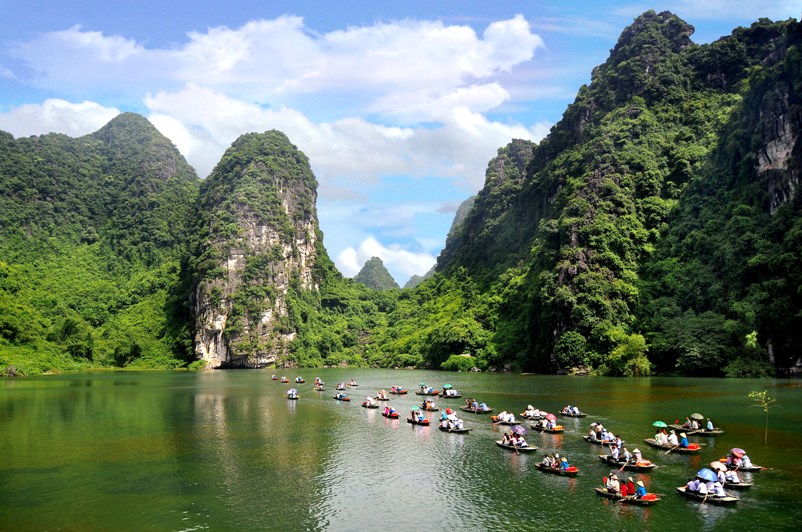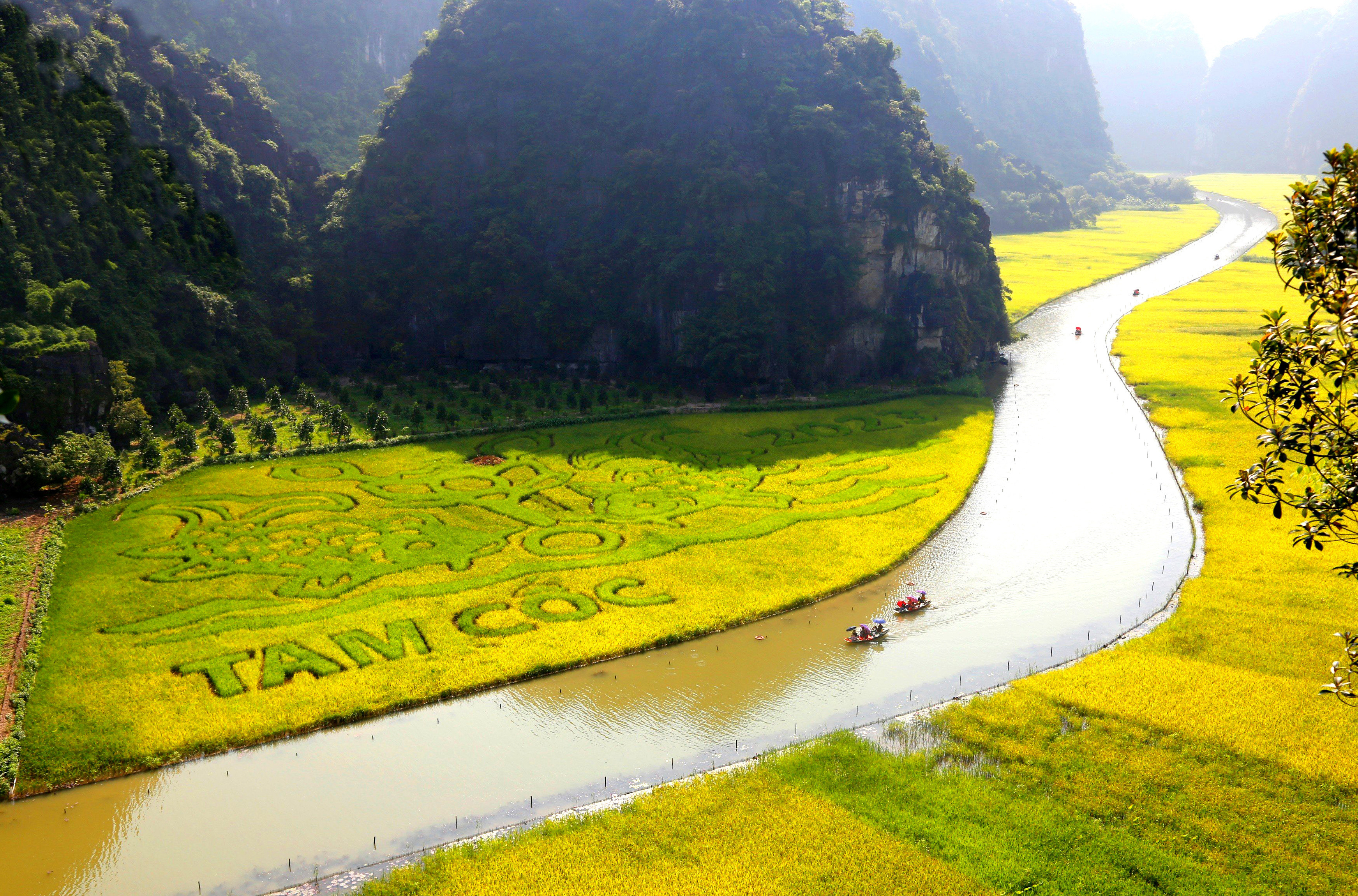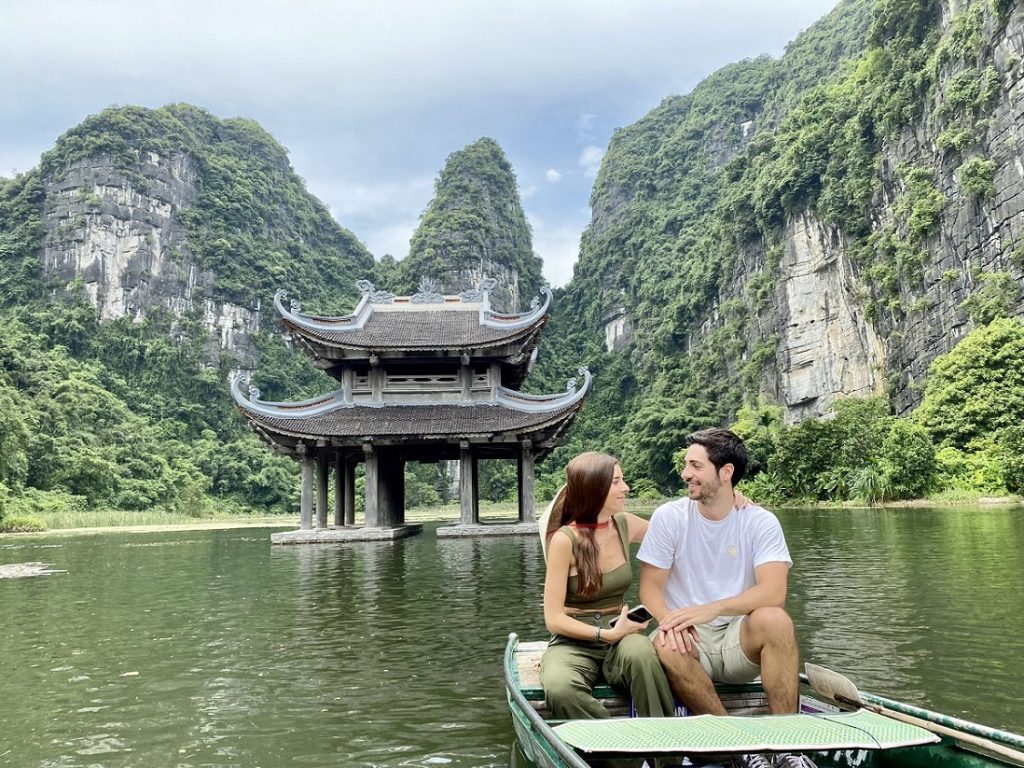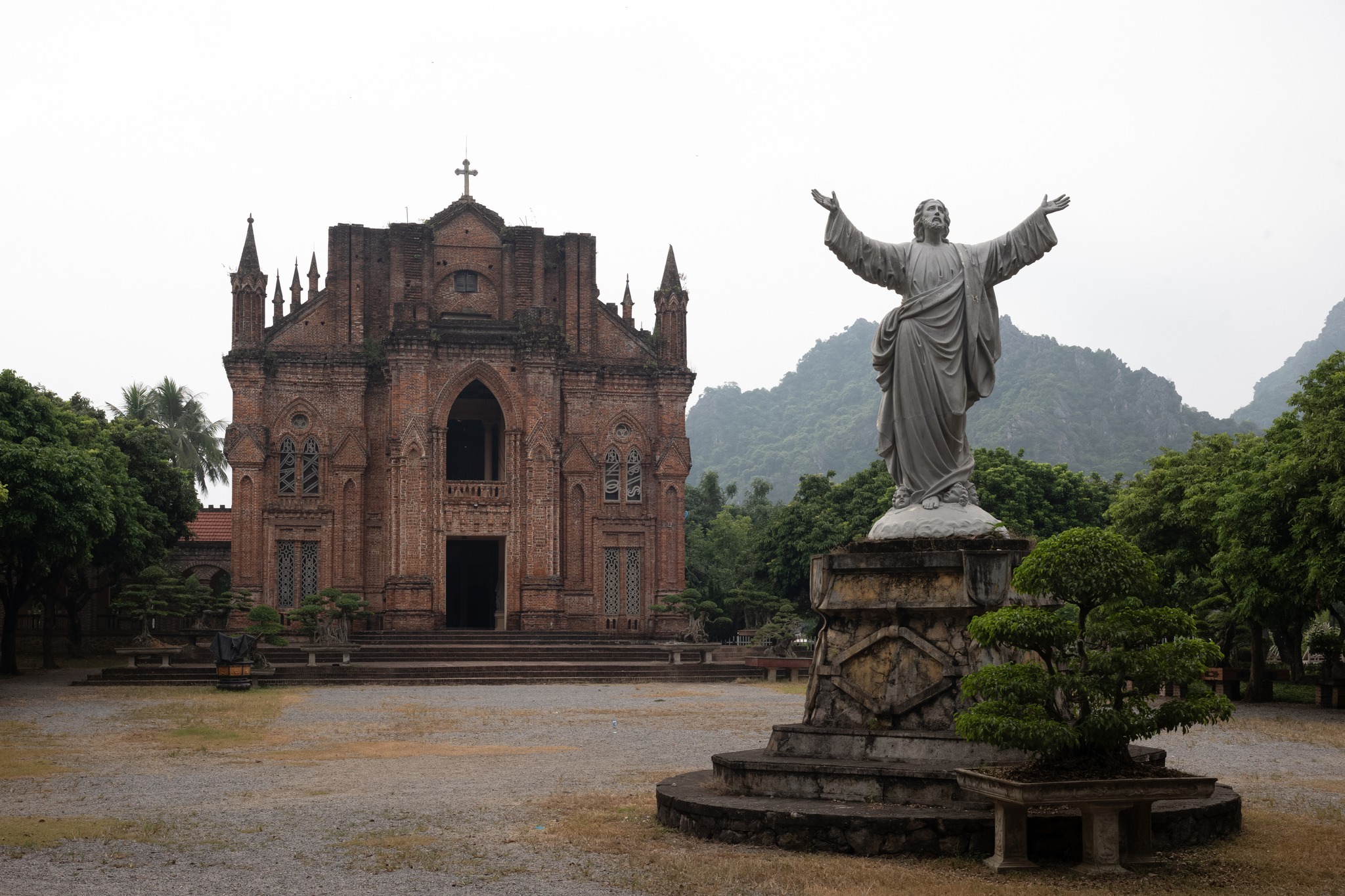Ninh Binh
Sightseeing
Overview
Ninh Binh Province
Ninh Binh is located at the southernmost point of the Red River Delta, 93km south of Hanoi, connects Northern Vietnam and the Central by the majestic Tam Diep mountain range.Ninh Binh is surrounded by Day River and bordered by two provinces of Ha Nam, Nam Dinh to the East and Northeast, Hoa Binh Province to the North and the East Sea to the South
The National Highway 1A, National Highway 10 and the North-South railway run through Ninh Binh, which is a place of economic and cultural continuation between the North Delta and the Northwest Forests.
With an area of 1,390 square kilometers and a population of about 950,000, Ninh Binh currently has 1,499 cultural and historical relics, of which 79 were classified at the national level and 235 were classified at provincial level. Especially, the Trang An Scenic Landscape Complex was recognized as world natural and cultural heritage by UNESCO in 2014.
Favorable nature along with the rich history has created many scenic places and historical and cultural relics in Ninh Binh. Most of Ninh Binh's tourist attractions have a combination of natural resources and humanities resources.

Ninh Binh’s topography is divided into three distinct areas, the hills in the west and northwest, the plain in the east and the coastal area in the south.
With three-fourths of the area being hilly and mountainous, diverse karst topography is a base for the development of a great wealth of flora and fauna, forming many tourist destinations with beautiful natural scenery that appeal to tourists, especially the cave complex such as Trang An, Tam Coc - Bich Dong, Van Long Wetland Nature Reserve, Van Trinh Cave, Dich Long Cave, Thien Ha Cave...
Ninh Binh has the largest forest area (over 29 thousand hectares)compared to other provinces in Red River Delta. The forest ecosystem in Ninh Binh is very distinctive, with Cuc Phuong National Park, a typical tropical forest with an area of over 22,000 ha, home to nearly 2,000 species of higher plants and about 2,600 species of animal; The Van Long nature reserve, which is featured forthe largest wetland ecosystems in the Red River Delta (about 2,643 ha). This is a protected area for rare primate Delacour’s langur.
In addition, Hoa Lu Special-use Forest and Kim Son coastal mangrove forest have a rich ecological system and landscape with many rare and precious plant and animal species listed in the Red Book of Vietnam and the World.
Besides scenic places, cultural and spiritual tourism is also a strength of Ninh Binh, promoting the advantage of a sacred land which was the capital of three dynasties: Dinh, Early Le, Ly, associated with the great changes of the national history. It is also a place of convergence and development of many religions, especially Buddhism and Christian.
Ninh Binh hasa large number of religious and cultural architectural works that have historical value, of which many have been included in the tours such as: Phat Diem Stone Church, Hoa Lu Ancient Capital, Bich Dong Pagoda, Bai Dinh Pagoda, Tran Temple (Trang An Ecological Complex), Temple for worshipping Duc Thanh Nguyen, Thai Vi Temple, Ban Long Pagoda, etc. The historical and cultural relics in Ninh Binh mainly associated with the Dinh, Early Le and Ly Dynasty.In addition, Ninh Binh is one of the locals still preserve many folk festivals.
At present, the province has 74 festivals, some festivals have become tradition not only of local people but also of the whole province and attract the attention of domestic and international visitors such as: Hoa LuFestival, Thai Vi Temple Festival, Duc Thanh Nguyen Temple Festival, Trang An Festival, etc.
Ninh Binh’s topography is divided into three distinct areas, the hills in the west and northwest, the plain in the east and the coastal area in the south.
With three-fourths of the area being hilly and mountainous, diverse karst topography is a base for the development of a great wealth of flora and fauna, forming many tourist destinations with beautiful natural scenery that appeal to tourists, especially the cave complex such as Trang An, Tam Coc - Bich Dong, Van Long Wetland Nature Reserve, Van Trinh Cave, Dich Long Cave, Thien Ha Cave...
Ninh Binh has the largest forest area (over 29 thousand hectares)compared to other provinces in Red River Delta. The forest ecosystem in Ninh Binh is very distinctive, with Cuc Phuong National Park, a typical tropical forest with an area of over 22,000 ha, home to nearly 2,000 species of higher plants and about 2,600 species of animal; The Van Long nature reserve, which is featured forthe largest wetland ecosystems in the Red River Delta (about 2,643 ha).
This is a protected area for rare primate Delacour’s langur. In addition, Hoa Lu Special-use Forest and Kim Son coastal mangrove forest have a rich ecological system and landscape with many rare and precious plant and animal species listed in the Red Book of Vietnam and the World.
Besides scenic places, cultural and spiritual tourism is also a strength of Ninh Binh, promoting the advantage of a sacred land which was the capital of three dynasties: Dinh, Early Le, Ly, associated with the great changes of the national history. It is also a place of convergence and development of many religions, especially Buddhism and Christian.
Ninh Binh hasa large number of religious and cultural architectural works that have historical value, of which many have been included in the tours such as: Phat Diem Stone Church, Hoa Lu Ancient Capital, Bich Dong Pagoda, Bai Dinh Pagoda, Tran Temple (Trang An Ecological Complex), Temple for worshipping Duc Thanh Nguyen, Thai Vi Temple, Ban Long Pagoda, etc.
The historical and cultural relics in Ninh Binh mainly associated with the Dinh, Early Le and Ly Dynasty.In addition, Ninh Binh is one of the locals still preserve many folk festivals. At present, the province has 74 festivals, some festivals have become tradition not only of local people but also of the whole province and attract the attention of domestic and international visitors such as: Hoa LuFestival, Thai Vi Temple Festival, Duc Thanh Nguyen Temple Festival, Trang An Festival, etc.
Explore the place
The City Maps
Reviews
Trip Ideas
FEATURED ARTICLE
Tam Coc - Bich Dong Landscape Complex
Tam Coc - Bich Dong Landscape Complex is a part of Trang An Scenic Landscape Complex, which is located in Ninh Hai Commune, Hoa Lu District, approximately eight kilometers from the center of Ninh Binh City, the provincial capital. UNESCO designated Trang An Scenic Landscape Complex as a World Cultural and Natural Heritage Site in June 2014.

FEATURED ARTICLE
Trang An Landscape Complex
Trang An Ninh Binh: Marvel at the scenic beauty of the “Heaven on Earth”. Situated near the southern margin of the Red River Delta, the Trang An Landscape Complex is a spectacular landscape of limestone karst peaks permeated with valleys, many of them partly submerged and surrounded by steep, almost vertical cliffs. Exploration of caves at different altitudes has revealed archaeological traces of human activity over a continuous period of more than 30,000 years. In 2014, Trang An Eco-tourism Complex was also recognized as a UNESCO World Heritage Site for its natural and cultural significance.

FEATURED ARTICLE
Chau Son Holy Mother Monastery
Chau Son Marian Monastery is located in Phu Son commune, Nho Quan district, Ninh Binh province, more than 70km from Hanoi. The monastery is located peacefully in the middle of the green and rolling forest space. Around only the sound of birds singing echoes and the rustling of leaves, adding to the mysterious and ancient look.


